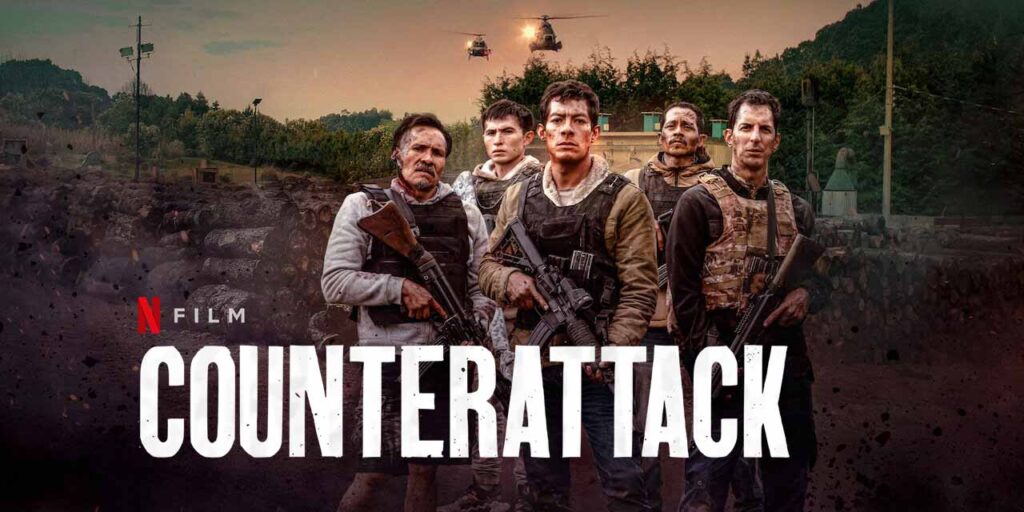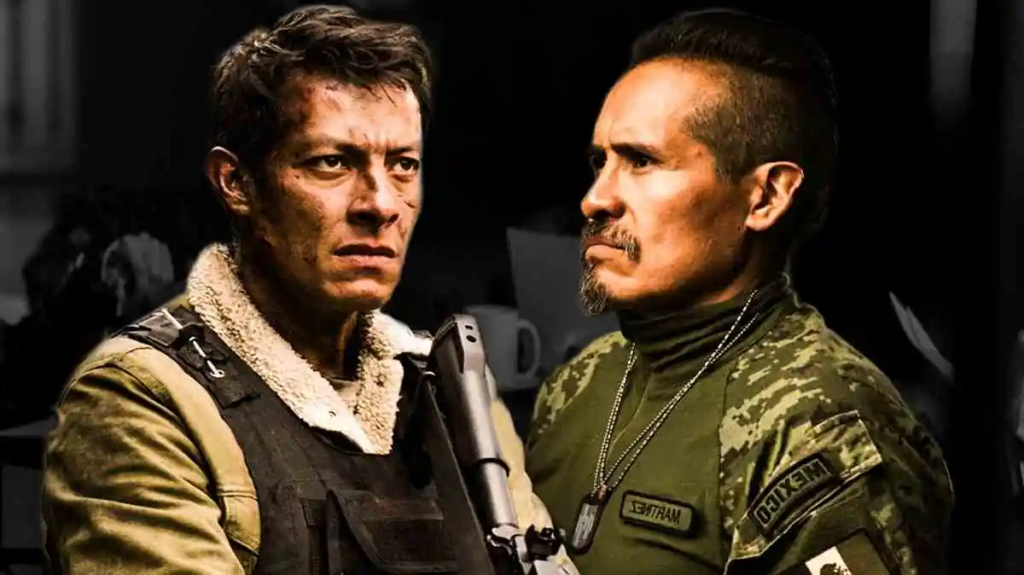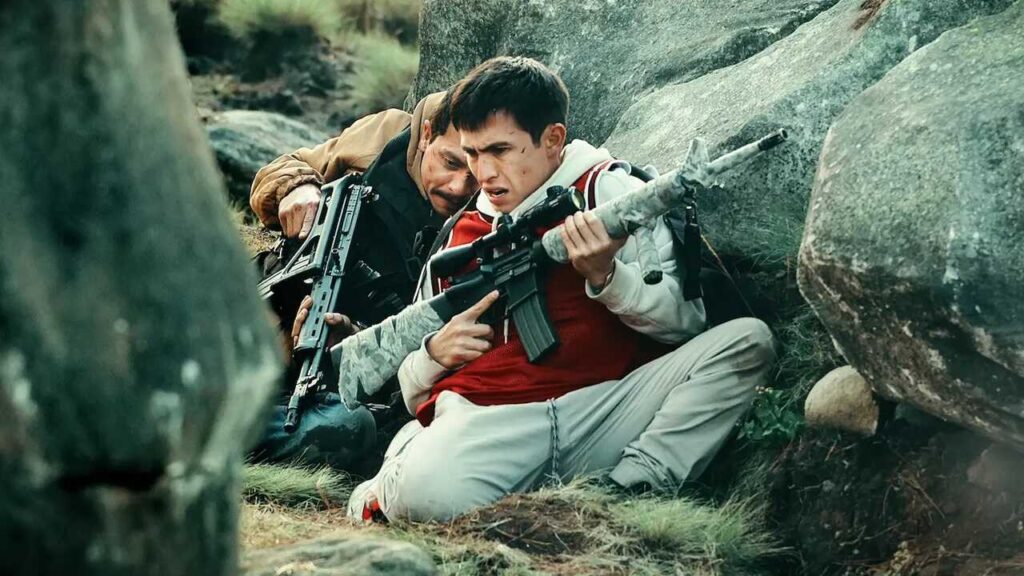Counterattack, also known as Counterstrike, is a Mexican action thriller that premiered exclusively on Netflix on Friday, February 28.
With a runtime of one hour and 25 minutes, this film, produced by Draco Film Production, centers around a hostage rescue operation that unexpectedly turns into an ambush orchestrated by a criminal organization. At first, it may seem like a conventional Western action film featuring stereotypical heroes; however, I found myself engrossed within the initial moments, as the narrative unfolds with greater complexity than anticipated.

The Artistic Vision Behind Counterattack
The production team demonstrated exceptional effort in this film; I would rate it a perfect 7/10 (or not). The talented cast contributes significantly to the film’s success, effectively conveying the narrative and establishing a connection with the audience. Conversely, a poorly executed film can undermine even the most compelling storyline. Nevertheless, when a film is skillfully directed, produced, and acted, it captivates viewers and fosters a deep engagement with the story.
What particularly impressed me about this film was the director’s vision. A proficient director like Chava Cartas, who helmed this project, can breathe life into the narrative and guide the actors to deliver outstanding performances.
The ensemble cast, including Luis Alberti, Noé Hernández, Mayra Batalla, Luis Curiel, Roberta Burns, Leonardo Alonso, and David Calderón León, must bring their utmost talent to align with the writer’s vision. Exceptional performances from the cast can significantly enhance the overall quality of a film.
As a writer, artist, and enthusiast director within the creative realm, I was particularly struck by the film’s stunning visuals. The angles, quality, and timing were executed flawlessly. A weak narrative will fail to resonate with the audience, underscoring the importance of a compelling story, strong performances, and effective direction in creating a truly impactful cinematic experience.
The Supposed ‘Hero’
Previously, I discussed the portrayal of Western films that depict a specific hero engaged in a rescue mission, appealing to the audience’s emotions to evoke sadness and align with the narrative. Central to the Netflix thriller Counterattack is a narrative that illustrates how the protagonists, despite being outnumbered, remain steadfast and resolute. This group is committed to doing what is right as long as civilians are relying on their support.
It is undoubtedly complex when the soldiers, who are genuinely the “good guys,” find themselves amidst both criminals and law enforcement officials who collaborate with these criminals. In essence, they are surrounded by numerous adversaries.

This scenario unfolds near the US border, where a hostage rescue operation leads to the emergence of a new foe for the recently arrived Captain Guerrero. Nevertheless, they remain hopeful, as long as there are individuals committed to standing up for justice in their nation.
Consequently, Captain Guerrero and his elite team retaliate when confronted by a criminal faction. The unfortunate discovery of a mass grave by the kidnapped women significantly exacerbates their situation, as they become witnesses to a dark secret that should have remained concealed.
Action/Survival Movies
It is indeed a fact that survival action films tend to perform exceptionally well at the box office, a trend that has been consistent over the years. Consequently, Hollywood invested significantly in the production of such films, particularly during the 70s, 80s, 90s, and 2000s. One can argue that military themes, infused with elements of hypernationalism and machismo, have consistently proven to be commercially viable. While I would argue that the appeal of sex and adolescent themes in contemporary cinema is somewhat concerning, it raises important questions about the implications of producing violent action films. What messages are we conveying to younger audiences? This topic warrants further discussion, as it prompts one to consider whether writers and screenwriters lack diverse ideas or if those in control of the industry have a specific agenda.

The notion that hypernationalism and machismo are commercially viable is indeed valid. Films depicting war criminals, portraying terrorists, and featuring western agents and soldiers, such as those in the James Bond Franchise, have consistently crafted the image of a heroic figure emerging to confront darkness and rescue the masses. The entire production team, including producers, directors, and writers, adeptly manipulates the emotions of their viewers. However, I do not wish to be labeled as anti-national. While I have enjoyed these films, I have gradually begun to question their narratives and underlying purposes, leaving me ambivalent about my feelings towards them.
It is difficult to remain unaffected when viewing a film like Counterattack, particularly in these troubling times characterized by crime, corrupt leadership, human trafficking and untrustworthy individuals in positions of power who would go to great lengths to engage in unethical behavior, even at the expense of societal well-being.

The art of writing in Counterattack
The narrative in Counterstrike, authored by Jose Ruben and Escalante Mendez, is notably straightforward. The characters Josefo, Roman, and the members of the El Enjambre Cartel are depicted as unequivocally malevolent. The Urias brothers share a troubled past with the Special Forces Corps of Mexico, known as the Murcielago, due to their father’s death at the hands of a previous elite soldier unit.
As this new group pursues them, the Urias brothers are driven by a desire for vengeance against those responsible for their father’s demise, all while striving to safeguard their violent enterprise. In contrast, Guerrero and his team embody unwavering righteousness. They advocate for women facing harassment and cherish their familial bonds. Ultimately, they are prepared to go to great lengths to rid their nation of malevolence. The only element that introduces a semblance of complexity is the Secretary, who illustrates how bureaucrats may align with nefarious individuals for personal gain, profiting from taxpayer funds. However, his limited presence in the narrative diminishes his significance, making it easy to overlook his role in the conflict between Guerrero, Josefo, and their respective factions. This simplicity is not necessarily a flaw; rather, it contributes to the film’s nostalgic feel, reminiscent of action movies from the 1970s and 1980s.